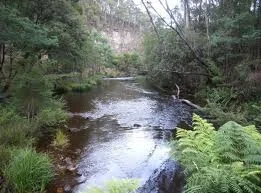Taking care with water
Remember the big drought we had from 1997 – 2009? More than 85% of Australians were on water restrictions. We even stopped watering our driveways. Thankfully the rains have returned for now, but they seemed to have washed away our efforts around saving water. Most of our drinking water comes from rivers that feed into dams, and some comes from boreholes that tap into underground water supplies. Water that we take from our environment is water that cannot be used support our rivers, forests and wetlands. We need to be careful with this delicate balance of nature. It seems everyone has slowed to change the way we use water. Why is this?
Where does water come from?
Water comes from the sky when it rains, but how did it get there to start with? Water comes from water, it’s a part of the water cycle and is constantly on the move. Water is evaporated by the sun from our oceans, lakes and rivers. This water vapor joins together to form clouds that fall as rain and the cycle starts again. In the Amazon most evaporation comes from the forest that sends water vapors to form new clouds and more rain. The more forest you have the more rain you get. Water is all around us as vapor in the atmosphere and is an important greenhouse gas that traps heat in our atmosphere. All life depends on water. Without it all life ends.
What forms of water produce least pollution?
Water that is captured at the point of use is best. In the olden days all houses had water tanks to capture the rain that fell on the roof to be used for cooking, cleaning, washing and bathing. Many farms still have windmills that pump water from underground. We now mostly rely on centralised water supplies coming from one place (usually a dam or river) that flows out of the tap whenever we need it. The most polluting way to collect water is from a desalination plant (De-Sal), as they use huge amounts of energy to turn salt water into fresh water. Scientists are working on ways to turn salt water into fresh buy using wave energy to pump salt water from the ocean ashore, filtering out the salt and create clean energy at the same time.
How can we tell which products are helpful and use less water?
As you explore ways of reducing water waste, you will have trouble working out if the products are any good. Don’t believe everything you read. One way to ensure that you are creating less waste is to simply buy less packaged water in the form of sweetened drinks. Who would have thought that we would willingly pay $2 – $4 dollars for something we can get from the tap just about for free? You can investigate how you manage water at home and school by asking about where the water goes. Do we recycle any water? Is there anyone out there helping people with good advice?
Is Australia doing a good job at saving water?
How can we be less wasteful with water? The great thing about water is that it can be used over and over again, forever. There is no real shortage – water’s just in the wrong place at the wrong time (floods and drought). It needs a lot of energy and is very expensive to move it around. Australians have shown what a great job we can do when we need to around saving water – we need to think how we can use these good habits all the time. So why aren’t more people taking this problem seriously?
What might we do?
We can’t ignore the increasing demands for water. Farmers want water for crops, rivers need water for life. How much can we take out? How much should we take out? Is it different if you live upstream or downstream? The sooner we start to plan for the future the less difficult it will be later. Each of us can take action to be less wasteful with water. How might we get our school to waste less water? Is your family interested in making their water use spread further? How can you get other people to listen to you to re-think water use?
Do we need another drought to get our attention?
CREDIT
Source: Coolaustralia

